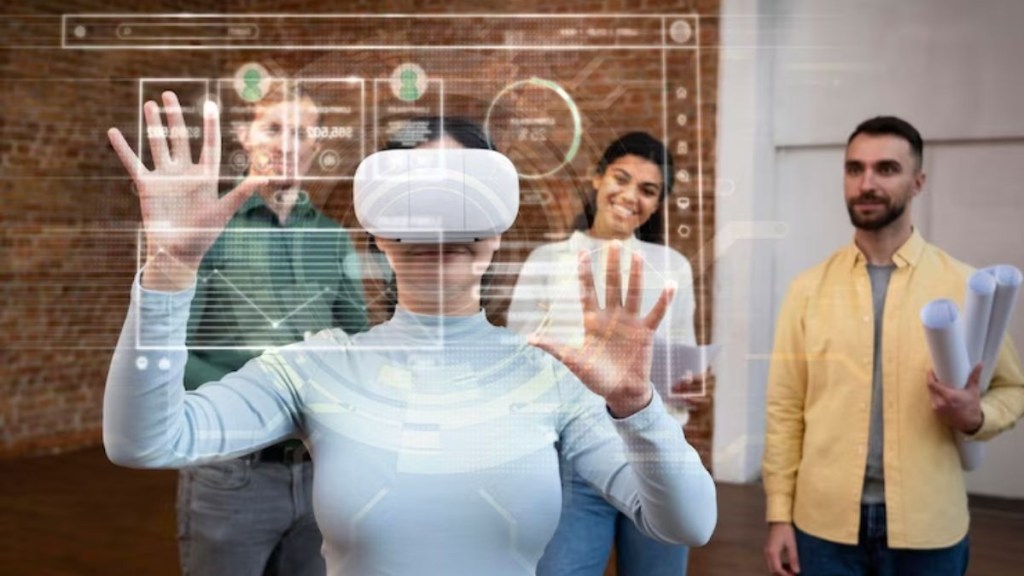By Nikhil Mathur
In the ever-evolving landscape of healthcare, the marriage of technology and medicine has been an inexorable force, giving rise to innovative breakthroughs that reshape the very fabric of patient care. Within this dynamic realm, Augmented Reality (AR) emerges as a striking catalyst, poised to usher in a new era for surgical procedures. This immersive technology, often synonymous with recreational pursuits like gaming and entertainment, is steadily unfurling its potential as a formidable instrument within the realm of medicine. With promises of transformative impact, Augmented Reality is positioning itself as a harbinger of revolution within the surgical domain, a prospect that beckons a closer exploration of its myriad applications, the tangible benefits it offers, and the intricate challenges it brings to the fore.
Applications of Augmented Reality in Surgery
The dynamic applications of AR in surgical procedures are poised to reshape surgical landscapes, enhancing outcomes for both patients and surgeons:
- Preoperative Planning: Visualizing Precision – The augmentation of surgical planning through AR showcases its utility. With sophisticated imaging technologies such as Magnetic Resonance Imaging (MRI) and Computed Tomography (CT) scans, three-dimensional models of a patient’s organs can be generated. These models are then overlaid onto the surgeon’s field of view, providing an intricate preoperative assessment. This newfound perspective empowers surgeons to strategize with unparalleled precision, increasing the probability of optimal outcomes.
- Intraoperative Navigation: Real-time Insights – AR’s impact peaks during surgeries with its real-time navigation capabilities. Surgeons can access live, superimposed data through AR glasses or handheld devices. This eliminates the need for recurrent glances at external monitors, minimizing the chances of error. By highlighting crucial structures like blood vessels and nerves, AR mitigates risks and enhances precision, promoting safer surgeries.
- Training and Education: Learning Reimagined – A paradigm shift in surgical training emerges through AR. Medical students and trainees can simulate procedures within a controlled virtual environment, honing their skills before real-life surgeries. The interactive learning experiences not only augment technical aptitude but also amplify the confidence of future surgeons. Moreover, AR facilitates mentorship during live surgeries, bridging the gap between seasoned surgeons and their less-experienced counterparts.
Advantages Unleashed by Augmented Reality in Surgical Procedures
The integration of Augmented Reality (AR) into the surgical realm unfurls a spectrum of advantages that converge to redefine the art of surgery. These benefits span the realms of precision, efficiency, and education, intertwining to create a tapestry of progress and innovation.
- Precision Redefined: Elevating Surgical Accuracy and Safety – Augmented Reality introduces a dimension of precision hitherto unexplored in surgical procedures. This newfound level of accuracy enhances safety, redefining the parameters of surgical excellence. By superimposing vital data directly onto the surgeon’s visual field, AR eradicates the potential for errors stemming from the interpretation of external screens. Surgeons are equipped with a real-time compass, a navigational aid that empowers them to traverse complex anatomical terrains with unmatched precision.
- The Symphony of Time Efficiency and Harmonized Workflow – Augmented Reality emerges as a conductor orchestrating the symphony of time efficiency within surgical theaters. Surgeons are granted real-time access to pertinent data without the need to divert their focus from the surgical canvas. This harmonization of data integration manifests as a seamless workflow, potentially transmuting surgical timelines. By erasing the need for repetitive shifts between visual displays and the surgical field, AR imbues the surgical process with a rhythm that resonates with efficiency.
- Pioneering Pedagogy: The Acceleration of Learning Curves – The traditional learning curve inherent to surgical disciplines encounters a paradigm shift through the advent of Augmented Reality. Trainees embark on a journey characterized by interactive, lifelike surgical simulations within controlled virtual environments. Augmented Reality acts as an accelerator, shortening the trajectory of learning as it cultivates skills and techniques. This immersive education translates into a generation of future surgeons poised for their roles with unprecedented readiness.
Challenges and Considerations
While the promise of AR in surgery is immense, several hurdles must be surmounted:
- Technical Complexities – Seamless integration of AR technology within the operating room requires robust hardware and software solutions. AR devices, like glasses, should be unobtrusive and provide reliable data overlay without impeding the surgeon’s range of motion or vision.
- Data Accuracy and Integration – The efficacy of AR hinges on the precise alignment of digital overlays with real anatomical structures. Advanced imaging and tracking technologies are paramount to ensure accurate synchronization in real-time scenarios.
- Surgeon Training and Adaptation – Effective utilization of AR necessitates comprehensive training for surgeons and medical staff. Mastery over AR devices and data interpretation must be achieved without disrupting the surgical process.
- Ethical and Legal Dimensions – The ethical implications of integrating AR into surgeries underscore the importance of patient consent and accountability. A robust legal framework must be in place to address potential liabilities stemming from technological errors.
Way Forward
Augmented Reality’s emergence in surgical procedures marks a pivotal juncture in medical history. From elevated preoperative planning to real-time navigation and transformative training experiences, AR offers multifaceted benefits that augur well for both surgeons and patients. Despite the obstacles, ongoing advancements in technology and research illuminate a path toward a future where AR becomes an indispensable tool in the surgical domain. As precision, safety, and learning converge through the lens of Augmented Reality, the healthcare landscape stands on the cusp of an exciting transformation.
The author is chief of medical services, CARE Hospitals Group








